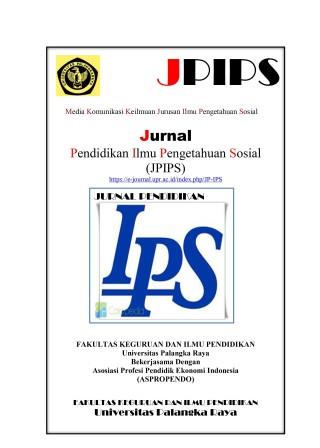Kurikulum Muatan Lokal Tingkat SMA Di Kalimantan Tengah
Keywords:
curriculum, local content, senior high schoolsAbstract
Size of Central Kalimantan province, which reached 153.8 thousand square km or (1.5 times the island of Java) with a population of 2.3 million people plus natural resource conditions are very good at doing farming activities, especially rubber and rattan, make Central Kalimantan the distinctive characteristics as one of the province's largest rubber producer and rattan in Indonesia. Given the potential of the area is so large in relation to agricultural activity rubber and rattan, and also based on the opportunity for students who are limited to continue on to higher education (college), then it should be in the schools in the area needs to be the development of a local curriculum that adapted to the natural conditions and potentials. To that end, at the Senior High School in Central Kalimantan needs to be a local curriculum that refers to the way agricultural cultivation skills of rubber and rattan as a way to preserve the culture of indigenous farming in Central Kalimantan. This study aims to generate local curriculum level of high school, especially for the field of agricultural skills planting rubber and cane that can be applied to the entire Senior High School in the province of Central Kalimantan and found a number of factors that may affect the implementation of the development of local content in school curriculum Senior High School in the province of Central Kalimantan.
Downloads
References
Aect, 1977, The Definition of Education Technology. Washington. D.C. AECT.
Absyer. M. 1989. Dasar-dasar Pengembangan Kurikulum. Jakarta. Depdikbud. Ditjen Dikti. P2LPTK.
Ardhana, Wayan, 1982. beberapa Metode Statistik Umum Penelitian Pendidikan. Surabaya. Usaha Nasional.
Ardhana. Wayan. 1992. sistem Pendidikan Nasional. Realisasi. Permasalahan dan pemecahannya, Makalah Konvensi Nasional Pendidikan Indonesia II, Melon 4-8 Februari 1992.
Bogdan & Biklen. S.K. 1982. Qualitative Research For Education To Theory and methods. Boston, Allyn and Becon. Inc.
Degeg. I Nyoman Sudana. 1989. Ilmu Pengajaran. Taksoni variabel. Jakarta. Depdikbud. Ditjen Dikti. P2LPTK.
Degeng. 1991. Pedoman Penulisan Skripsi Berdasarkan Hasil Kerja Pengembangan (Proyek), Malang Satuan Tugas Penyusunan Buku Pedoman Penulisan Skripsi Mahasiswa IKIP Malang.
Depdikbud. 1987. Keputusan Menteri Pendidikan dan Kebudayaan RI Nomor 0412/LJ/1987. Jakarta. Depdikbud.
Dick. W dan Caey. L. 1985. The systematic Sedion of Instruction, (Sewn Edition). Glenviwillonis, Scott. Foresman and Company.
Dimyati. M. 1988. Beberapa Masalah Pokok Dalam Penelitian Kualitatif. Makalah pada lokakarya Penelitian lanjut angkatan II IKIP Malang.
Knowles. M.S. 1986. The Adult Learner. A Neglected Species. Houston. Guif Publishing Company.
Mehmud. Darlis. 1989. "Indikator-indikator Relevansi Pendidikan Dalam rangka Memikirkan Kurikulum bagi negara yang bermasyarakat majemuk. Analisis Pendidikan I (3), 50-53.
Napitupulu. W.P. 1988. "Belajar Sambil Bekerja" Jurnal Pendidikan. Nomor 1. 19-32.
Peraturan Pemerintah RI Nomor 29 tahun 1990, Tentang Pendidikan Menengah.
Sarojo. 1988. Peranan Siklus Alam dan Hubungan-hubungannya yang potensial untuk Perencanaan Pembangunan Pendidikan. Pidato Dies Natalis Ke-34 IMP Malang. Tanggal 18 Oktober 1988.
Soedijarto. 1977. Pembaharuan Kurikulum Pendidikan Dasar dan menengah dan implikasinya bagi pengembangan kurikulum pendidikan Tenaga Kependidikan. Jakarta: BP3K.
Undang-undang Nomor 2 tahun 1989, tentang Sistem Pendidikan Nasional.














